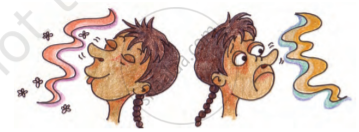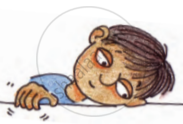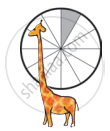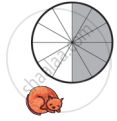Advertisements
Chapters
2: A Snake Charmer’s Story
3: From Tasting to Digesting
4: Mangoes Round the Year
5: Seeds and Seeds
6: Every Drop Counts
7: Experiments with Water
8: A Treat for Mosquitoes
9: Up You Go!
10: Walls Tell Stories
11: Sunita in Space
12: What if it Finishes ...?
13: A Shelter so High!
14: When the Earth Shook!
15: Blow Hot, Blow Cold
16: Who will do this Work?
17: Across the Wall
18: No Place for Us?
19: A Seed tells a Farmer’s Story
20: Whose Forests?
21: Like Father, Like Daughter
22: On the Move Again
![NCERT solutions for Environmental Studies - Looking Around [English] Class 5 chapter 1 - Super Senses NCERT solutions for Environmental Studies - Looking Around [English] Class 5 chapter 1 - Super Senses - Shaalaa.com](/images/environmental-studies-looking-around-english-class-5_6:71bdf81a5f57474cb6fe25f9506ae503.jpg)
Advertisements
Solutions for Chapter 1: Super Senses
Below listed, you can find solutions for Chapter 1 of CBSE NCERT for Environmental Studies - Looking Around [English] Class 5.
NCERT solutions for Environmental Studies - Looking Around [English] Class 5 1 Super Senses Super Senses [Pages 2 - 14]
Think and Tell
How did the ant know that the other ants were not from its group?
How did the guard ant recognise this ant?
Try this and write
Drop some sugar, jaggery, or anything sweet on the ground. Wait until the ants come there.
How long did it take for the ants to come?
Drop some sugar, jaggery, or anything sweet on the ground. Wait until the ants come there.
Did one ant come first or a group of ants came together?
Drop some sugar, jaggery, or anything sweet on the ground. Wait until the ants come there.
What did the ants do with the food?
Drop some sugar, jaggery, or anything sweet on the ground. Wait until the ants come there.
Where do they go from there?
Drop some sugar, jaggery, or anything sweet on the ground. Wait until the ants come there.
Do they move in a line?
Drop some sugar, jaggery, or anything sweet on the ground. Wait until the ants come there.
Now carefully, without harming the ants, block their path for a while with a pencil.
Now observe, how do the ants move?
Now can you guess why the ants behaved like that when you blocked their path?
Have you ever been troubled by mosquitoes? Just think, how do they know where you are?
Have you seen a dog sniffing here and there? What do you think it is trying to smell?
Write
In what ways do human beings make use of this special sense of smell of dogs?
When do you find your sense of smell helpful to you? List some examples. Like - to know by its smell that food has gone bad or that something is burning.
Name the animals that you would be able to recognise only by their smell, without seeing them?
Write the names of five things whose smell you like and five things whose smell you do not like.
| I like the smell of | I do not like the smell of |

Do you and your friends have similar answers?
Discuss
Do the clothes of any of your family members smell? whose?
Did you ever come across any smell in a crowded place such as a fair, bus, train, etc?
Think and discuss
Sushila covered her nose when she cleaned Deepak’s nappy, but not when she cleaned her daughter. Why do you think she did this?
How do you feel when you walk near a heap of garbage? Think of the children who spend the whole day picking things from such garbage.
Is a smell ‘good’ or ‘bad’ for everyone in the same way? Or does it depend on how each one feels about it?
Let’s see
Write the name of a bird which has eyes in front of its head (like in humans).
Write the names of some birds which have eyes on either side of the head. What is the size of their eyes as compared to the size of their head?
Looking with one or both eyes
Close your right eye or cover it with your hand. Tell your friend to stand to your right, at some distance, and ask him to do some action (wave hand, shake the head, etc.)
Could you see your friend’s action, without moving your neck?
Close your right eye or cover it with your hand. Tell your friend to stand to your right, at some distance, and ask him to do some action (wave hand, shake the head, etc.)
Now try to look at your friend’s action with both your eyes open but without moving your neck.
Close your right eye or cover it with your hand. Tell your friend to stand to your right, at some distance, and ask him to do some action (wave hand, shake the head, etc.)
What was the difference between looking with one or both eyes?
Now toss a small ball or a coin and try to catch it. Try this with both your eyes open. Then close one eye and try to catch it. When was it easier to catch?
Imagine how it would be to have your eyes in place of your ears? What would you be able to do then, which you cannot do now?
Now can you guess from what distance can an eagle in the sky can see a roti on the ground?
Write
The names of ten animals whose ears can be seen.
The names of some animals whose ears are bigger than our ears.
Think
Is there some link between the size of animals’ ears and their hearing?
Try this
For this activity find a quiet place in your school. Tell one of your friends to stand at a short distance and ask him to say something softly. The rest of you should listen carefully. Then all of you put your hands behind your ears, as shown in the picture. Let the same child say something again as softly as before. In which case was the sound sharper? Ask your friends too.
Put your hands over your ears and say something. Can you hear your own voice?
Sit near a desk. Tap the desk once with your hand. Listen carefully. Now put your ear on the desk as shown in the picture. Tap on the desk once again with your hand. Listen again. Was there any difference in the sound of the tap?

Write
Can you understand the sounds of some animals? Which animals?
Do some animals understand your language? Which ones?
Say it with sounds
Just like birds and dolphins you can also make your own language of sounds for giving messages. Remember you have to talk to your friends with only sounds and no words. How and when will you need to give an alarm call? For example, when the teacher is coming to the classroom!
Sleeping-waking
Some animals go into a long, deep sleep in certain seasons. Then they are not seen for many months.
Have you noticed that during the cold season you cannot see any lizard in the house? Where do you think they have gone?
Given here is the sleeping time of animals. Write below the picture for how many hours a day that animal sleeps.

Cow ______
Given here is the sleeping time of animals. Write below the picture for how many hours a day that animal sleeps.

Python ______
Given here is the sleeping time of animals. Write below the picture for how many hours a day that animal sleeps.

Giraffe ______
Given here is the sleeping time of animals. Write below the picture for how many hours a day that animal sleeps.

Cat ______
When you see different animals, do you have any questions about them? Make a list of ten such questions.
What do you think are some of the dangers to tigers in the jungle?
Can human beings also be a threat to animals? How?
Find out
Where are other such National Parks in India?
Collect information on these and write a report.
What we have learnt
Have you noticed that sometimes singers put their hands on their ears when they sing? Why do you think they may be doing this?
Give examples of animals that may have a very strong sense of sight, hearing, or smell.
Let’s make a paper dog
For this, you need thick paper, a pencil, scissors, sketch pen.
Solutions for 1: Super Senses
![NCERT solutions for Environmental Studies - Looking Around [English] Class 5 chapter 1 - Super Senses NCERT solutions for Environmental Studies - Looking Around [English] Class 5 chapter 1 - Super Senses - Shaalaa.com](/images/environmental-studies-looking-around-english-class-5_6:71bdf81a5f57474cb6fe25f9506ae503.jpg)
NCERT solutions for Environmental Studies - Looking Around [English] Class 5 chapter 1 - Super Senses
Shaalaa.com has the CBSE Mathematics Environmental Studies - Looking Around [English] Class 5 CBSE solutions in a manner that help students grasp basic concepts better and faster. The detailed, step-by-step solutions will help you understand the concepts better and clarify any confusion. NCERT solutions for Mathematics Environmental Studies - Looking Around [English] Class 5 CBSE 1 (Super Senses) include all questions with answers and detailed explanations. This will clear students' doubts about questions and improve their application skills while preparing for board exams.
Further, we at Shaalaa.com provide such solutions so students can prepare for written exams. NCERT textbook solutions can be a core help for self-study and provide excellent self-help guidance for students.
Concepts covered in Environmental Studies - Looking Around [English] Class 5 chapter 1 Super Senses are Super Senses.
Using NCERT Environmental Studies - Looking Around [English] Class 5 solutions Super Senses exercise by students is an easy way to prepare for the exams, as they involve solutions arranged chapter-wise and also page-wise. The questions involved in NCERT Solutions are essential questions that can be asked in the final exam. Maximum CBSE Environmental Studies - Looking Around [English] Class 5 students prefer NCERT Textbook Solutions to score more in exams.
Get the free view of Chapter 1, Super Senses Environmental Studies - Looking Around [English] Class 5 additional questions for Mathematics Environmental Studies - Looking Around [English] Class 5 CBSE, and you can use Shaalaa.com to keep it handy for your exam preparation.
